How To Make Your Own Emergency Car Kit
I’m updating this emergency car kit post today because I know people either need to see it for the first time or be reminded to make one. We can all picture what might happen to families if they are directed to evacuate their homes during a hurricane or other emergency.
They find they’re at the mercy of circumstances where an emergency roadside kit would come in handy. It doesn’t have to be a car breakdown from things like a flat tire, it could just be road closures due to blockage or challenges on the road up ahead.
One of the challenges is figuring out how much to include in your roadside emergency kit based on vehicle type and storage space, family size, how far you might be traveling, etc. This post lists a whole bunch of useful items and you need to set your own personal priorities.
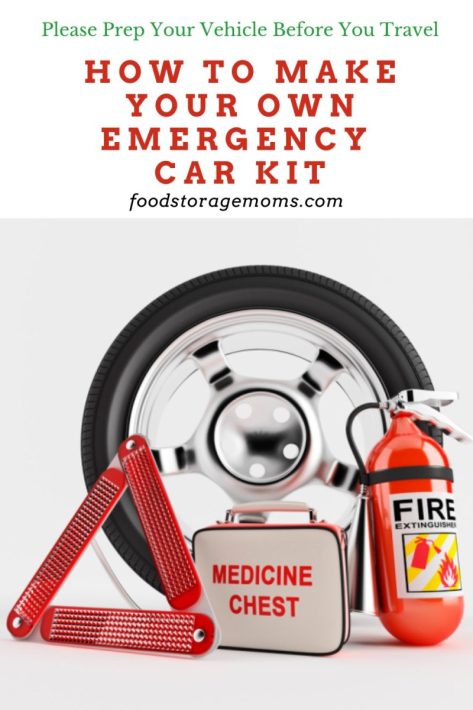
If you don’t have roadside assistance coverage through your car insurance coverage, you may want to consider coverage through the American Automobile Association (AAA).
Why to Make Your Own Emergency Car Kit
Here are a couple of situations as presented by a reader and my own family as support for this concept:
“The roads throughout western Florida where the storm made landfall were packed with those evacuating. Many of the gas stations had closed, so those who didn’t have much gas in their tanks were put at risk on the road. I’m sure many would have benefited from having one of these car emergency kits and putting the contents to use.
My two daughters and one son-in-law had driven up to Park City, Utah for a quick visit with friends a few years ago. The weather was beautiful to start the day with the sun shining on their way up Parley’s Canyon, one of the main east/west routes through Utah on I-80.”
Here’s the deal about this particular northern Utah canyon. It can be brutal in the winter with ice and layers of frozen snow. At times, cars and trucks slip and slide going up or down the canyon if they don’t have snow tires, tire chains, or 4-wheel drive for traction. Local agencies try to keep the road clear during snowstorms, but it can be a challenge in heavy storms.
Snowy Canyons
Of course, those who are prepared with tires, chains, or 4-wheel drive are sometimes dodging those cars that have trouble driving in severe snowstorms. If you’re driving down the canyon it doesn’t matter what your car is equipped with, it can sometimes be like an ice skating rink with cars sliding everywhere.
Once you start to slide using your breaks won’t work if it’s really icy. Most of us who drive in bad weather know we need to gear down and slow down. Sometimes there’s no way to slow down once the sliding starts. I call it white-knuckle driving.
Mark has no fear of driving in the worst of the worst weather. I think it’s because he grew up in Northern Utah and actually got his first driver’s license in January at age 15, right in the middle of winter.
Some Days Start Out Sunny
On this particular day, my family made it up the canyon in beautiful sunny weather. On the way down the canyon, a truck further down the canyon ahead of them had an engine fire problem and the resulting chaos stopped traffic for almost two full hours. I’m sure you’ve probably gotten into your car to drive a short distance and sometimes the traffic stops, I mean to a dead stop.
This happened to them on their way home, and what should have been a 15-minute trip during the canyon phase was much longer than anyone could expect. Now, there is no way to turn around in most sections on this I-80 Parley’s Canyon Highway. No stopping or U-Turns are allowed on either side of the road.
It has a barrier about 4 feet high going down the center of the highway in many places, so once you start driving down the road, you have to go to the next exit. So what do you do when you’re stalled in the middle of the canyon for multiple hours? Here are some ideas for you to consider:
Shout Out To My Son-In-Law
I must shout out to my son-in-law for filling the gas tank before heading up the canyon. Whew, it was hot that day, at least they could run the air conditioning. If it had been during the winter they would have had to run the car’s heater to keep them warm.
It’s all about being prepared. The main challenging thing, they had no water bottles in the car. Luckily it was only two hours sitting at a standstill.
This is when my Emergency Car Toilet would have come in very handy in an emergency car kit. All you need is an empty #10 can, filled with the items on the post I wrote. You would be good to go, literally. LOL
Emergency Car Kit
We have two of these bags that I made into a car kit for emergencies and they are secured in the back of my Honda CRV. My Dewalt tool kit is my first aid kit. These Husky Tool Bags are great. The pack of items was put together some time ago and I feel so much more confident when we travel now. I feel we are properly prepared with the bags packed and ready all the time, just like my bug-out bags.
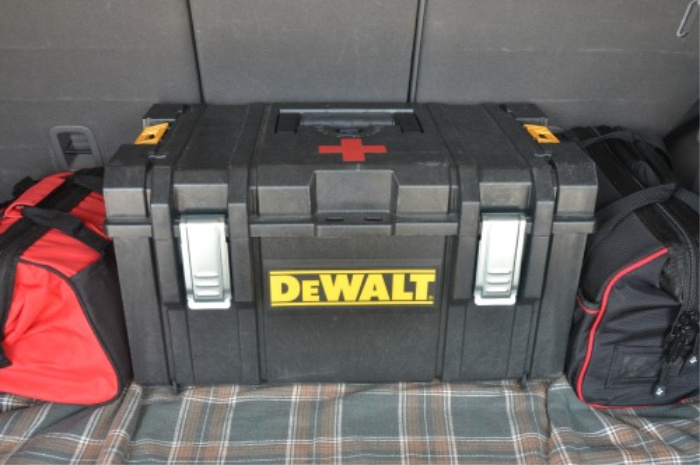
Food/Water/Snacks/Medications
1. Water
In an emergency car kit, it’s important to include a sufficient water supply for each person in the vehicle. Aim for at least one gallon per person per day, this would be the bare minimum. This will help ensure hydration and can also be used for basic hygiene needs if required. Strategies for Conserving Water in an Emergency
2. Food
Pack non-perishable food items that are easy to prepare and don’t require refrigeration. Consider options like energy bars, canned goods, or dried fruits and nuts. Make sure to check expiration dates regularly and rotate the food to keep it fresh. How To Store Your Food Storage
3. Snacks
Including snacks in your emergency car kit can provide a boost of energy and help keep spirits up during stressful situations. Choose items like granola bars, trail mix, or individually packaged crackers that have a long shelf life and are easy to grab. Don’t Forget to Stock Your Favorite Snacks
4. Medications
If you or anyone in your family relies on prescription medications, make sure to include a supply in your emergency car kit. Also, consider adding over-the-counter essentials such as pain relievers, antihistamines, antiseptic wipes, and bandages with gauze pads and adhesive tape for minor injuries. Remember to periodically check expiration dates and replace them accordingly. 35 OTC Medications You Should Store
Pet Stuff
1. Pet Supplies Like Food, Bed, Cat Litter Box, etc.
Other items so you don’t forget to plan a bag for our beloved pets would include a leash, water, poop bags, kitty litter, some chew sticks, and dishes. How to Keep Your Pet From Getting Stressed in Emergencies
You may want to add a bag of kitty litter to your car in case you live where it snows. If your tires are stuck the kitty litter may give you some friction to get the tires to move.
Cash
1. Small Bills
Emergency cash (small bills) Cash vs. Credit Card: Which is Better in an Emergency?
Sanitation Items
1. Emergency Toilet
Emergency toilet with toilet paper, garbage/trash bags, and hand sanitizer. Emergency Toilet
2. Diapers/Depends
Diapers, are awesome to help a young family who may be on a highway stopped for hours with a baby or a toddler. Baby wipes can also be used for so many things.
Depends are designed to help the adults in the car, you may have to relieve yourself in one.
Contact Information
Contact information is critical to have in an emergency situation. Please be sure and put “ICE” (in case of emergency) on your phone. This is so the highway patrol or others can contact your family if you are unable to call anyone.
You want the first responders to have the information needed to help you. If you don’t have a cell phone, write the information on a 3-inch by 5-inch card that is laminated to keep it waterproof in the bag.
With cell service available, having a cell phone charger you can plug into your car outlet is a handy item.
Stay Warm
1. Wool Emergency Blankets
Wool blankets are excellent for staying warm in emergency situations. They are lightweight, compact, and provide excellent insulation. Wool retains heat even when wet, making it a reliable choice in various weather conditions. 6 Reasons To Store Blankets For Any Emergency They now have quality sleeping bags that roll up fairly small to save space if there’s a chance you may have to spend the night in your car.
2. Warm Clothing Like Jackets and Merino wool socks
In colder climates or during winter emergencies, warm clothing is essential. Invest in a quality jacket that provides insulation and wind resistance.
Merino wool socks are also a great addition as they are moisture-wicking and provide extra warmth for your feet. What to Use for Insulation to Stay Warm If your area tends to be rainy, consider a rain poncho to stay dry and warm.
3. Insulated Coveralls
They offer full-body protection, including insulation for optimal warmth. They are designed to trap heat and provide excellent insulation against the elements.
4. Insulated Gloves
Keeping your hands warm is crucial in cold weather. Insulated gloves do just that, provide insulation. They protect against wind and moisture and maintain dexterity. Look for gloves with thermal properties and a waterproof outer layer for added protection.
5. Stocking Cap
A stocking cap or beanie is an important accessory to keep your head warm. It helps retain body heat and prevents heat loss through the head. Opt for a thick, insulating material like wool or fleece for maximum warmth.
6. Hiking boots/walking shoes
Proper footwear is vital to keeping your feet warm and dry. Choose hiking boots or walking shoes that are insulated, waterproof, and provide good traction. This will help prevent frostbite, keep your feet comfortable, and allow you to move around safely in cold or snowy conditions. When You Go Hiking Make Your Contact List For Survival
Safety
1. Fire Extinguisher (ABC type)
A fire extinguisher is a crucial tool for quickly extinguishing small fires. The ABC type is versatile and can handle different types of fires, including those caused by combustible materials, flammable liquids, and electrical equipment. Fire Extinguishers: More Important than a Gun?
2. Flares/Cones
Flares or cones are important for alerting others to potential hazards or accidents. They provide visibility and act as warning signs, helping to prevent accidents and keep everyone safe.
3. Reflective Vest
A reflective vest enhances visibility, making you more visible to drivers and other individuals, especially in low-light conditions or at night. It is essential for those working in construction, road maintenance, or any situation where visibility is critical.
Flashlights and Batteries
1. Flashlight and extra batteries, my favorite flashlights are Olight Flashlights
First Aid Kit
1. First aid kit for the car you can make yourself or purchase one light this one First Aid Kit
Emergency Car Kit Stuff
1. Foldable shovel
A foldable shovel is a versatile tool that can help you clear snow, dig out your tires, or create a path in emergency situations. In snowy areas, having a small snow shovel makes sense too. Having some sand or kitty litter can help you get some traction if stuck in a snow bank or slight incline.
2. Can or two of motor oil
It’s always a good idea to have extra motor oil in case of low levels or leaks. Check your vehicle’s specifications for the appropriate type.
3. Commonly Used Tools Like a Lug Nut Wrench, Tire Repair Kit, Road Flares
Having tools like a lug nut wrench, a tire repair kit with tire sealant, and road flares can be lifesaving during roadside emergencies. These tools will help you change a flat tire or make minor repairs if needed.
4. Rags/Paper towels
Rags or paper towels are handy for cleaning up spills, wiping down surfaces, or even as makeshift gloves. 12 Ways Preppers Can Use Old Newspapers
5. Jumper cables
Jumper cables are essential for jump-starting a dead battery and getting your vehicle running again. Make sure you know how to use them safely.
6. Tire pressure gauge
Keeping your tires properly inflated is crucial for safety and fuel efficiency. A tire pressure gauge allows you to check and adjust tire pressure as needed.
7. Pocket knife/scissors
A pocket knife or scissors can come in handy for various tasks like cutting seatbelts or opening packages.
8. Window ice scraper for ice or snow
During winter, a window scraper is essential for removing ice or snow from your windshield and windows, ensuring clear visibility.
9. Roll of Duct tape
Duct tape is a versatile tool that can temporarily fix a variety of issues, including broken mirrors or loose parts. Duct Tape: Why You Need to Store It
10. Bungee cords and zip ties
Bungee cords and zip ties are great for securing items or making temporary repairs until you can get professional help.
11. Tow Rope or Tow Strap
A tow rope or strap is useful if you need to be towed or help someone else in need. Make sure it’s strong enough for your vehicle’s weight.
12. Compass
In case you find yourself in an unfamiliar area, a compass can help you navigate and find your way back.
13. Matches
Matches are essential for starting a fire if needed, such as for emergency warmth or cooking. Matches: A Versatile Tool for Prepping
14. Spray bottle with washer fluid
It’s a good idea to have a spray bottle filled with washer fluid is useful for cleaning your windshield when driving in dusty or muddy conditions.
15. 1 gallon of coolant/antifreeze
Having a spare gallon of coolant can help you top up your vehicle’s cooling system if needed.
16. Car window break tool
A car window break tool can be used in emergencies to quickly shatter a window and escape.
17. Poncho/rain gear/change of clothes
Keeping a poncho, rain gear, and a change of clothes will ensure you stay dry and comfortable in wet weather conditions.
18. Umbrella
An umbrella can provide protection from the rain when you need to step out of your vehicle.
19. 12-volt air compressor as a Tire Inflator, and a charger for electronics
A 12-volt air compressor can inflate your tires if they are low on pressure, ensuring optimal safety and performance. It can also be used as a charger for electronic devices in emergency situations.
20. Work Gloves/Tire Plug Set
You will need work gloves, a tire plug set (buy them cheaply at Walmart), and emergency repair tape – self-fusing silicone tape.
21. Tarps
A 5×7 and 8×10. Lay the 5×7 on the ground while the larger tarp provides cover for changing a tire in the rain/mud. Of course, they’re also useful for basic shelter if you have to exit your car and hoof it to a shelter or other help.
Don’t Let Your Gas Tank Get Low
One of my readers, whom I call my friend, Harry, sent this information on why we shouldn’t let our gas tank get low. Thank you, Harry!!
“Of course, there are the “being prepared” reasons, but here are some other reasons not to let your fuel tank get low:
1. Most vehicles today have a fuel pump in the fuel tank. When this pump works, it generates heat and it depends on the fuel in the tank to cool it. The less fuel in the tank, the less capability to dissipate the heat in the fuel pump. More heat to the fuel pump can cause premature wear and earlier failure.
2. Most types of gasoline today have a quantity of ethanol in it. Ethanol is hygroscopic, meaning it attracts water. When you have a large quantity of air in your tank because of the low gasoline level, there is a much greater chance of condensation occurring. This places water in the tank which can combine with ethanol.
If there is sufficient water, phase separation occurs where the alcohol-containing water separates from the gasoline and drops out of suspension to the bottom of the tank since water is heavier than gasoline. The fuel pump pickup is located near the bottom of the tank.
Water in Gas Tanks is a Problem!
When the level of water rises to that point, you will be sitting on the side of the road waiting for a tow truck to take you to a shop to have the fuel tank drained and the fuel lines purged, not an inexpensive repair.
3. Further, with the above-mentioned condensation, rust, and other contaminants can form in the tank. If these loosen and drop into the bottom of the tank, they can be picked up by the fuel pump and clog the fuel filter.
Also, the lower the fuel level, the more sloshing of the fuel occurs increasing the chance of picking up these contaminants and sending them to the fuel filter as well. If the fuel filter gets clogged enough, you will once again be sitting on the side of the road. Just thought I would point these out as further support for not letting the gasoline level drop very far before topping off the tank.”
Final Word
Your car typically comes with a jack, but make sure your car kit ensemble has everything you need. Don’t be caught without a spare tire. I worry that many new car models don’t include spares! Let me know the things you like in your emergency car kit, let’s make this list as long as needed, depending on where you live or the size of your family, and the vehicle to carry the kit contents. Thanks again for being prepared for the unexpected. May God Bless this world, Linda
Copyright Images: Car Disaster Management Kit AdobeStock_338907885 by SpeedShutter, Car Maintenance Supplies Depositphotos_11922093_S by Saracin, Car Emergency Kit Depositphotos_11345606_S by Saracin

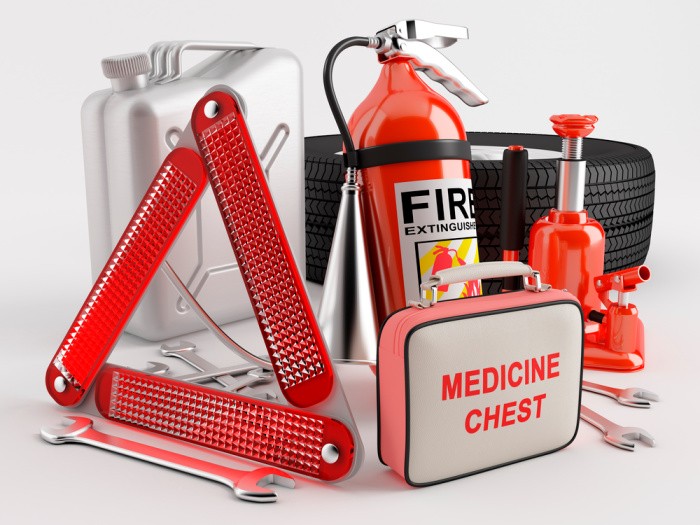

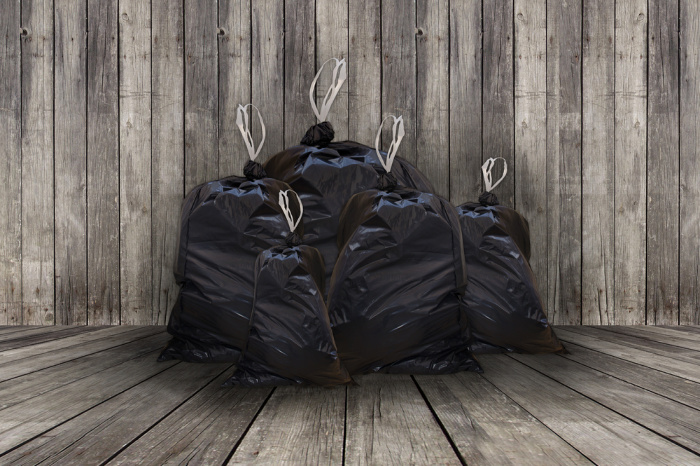
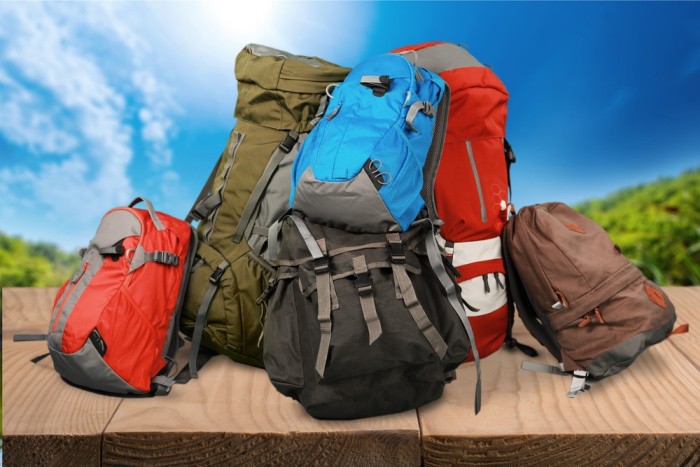
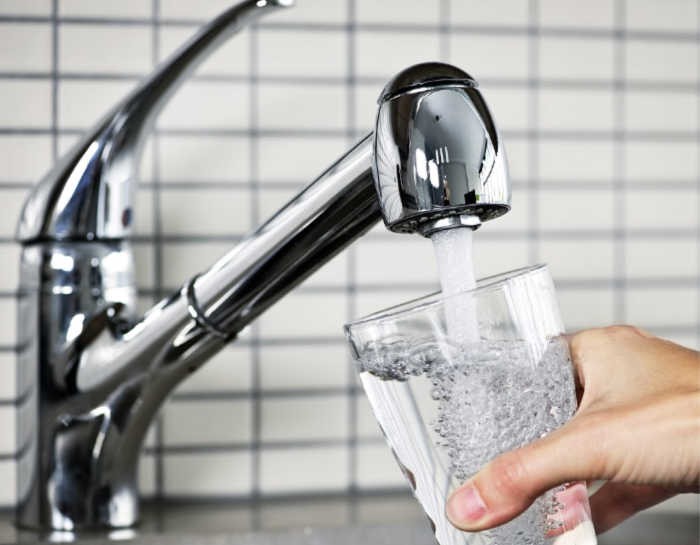
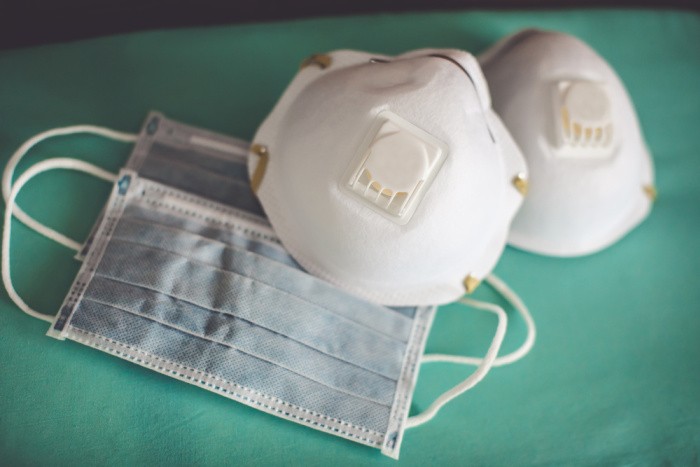
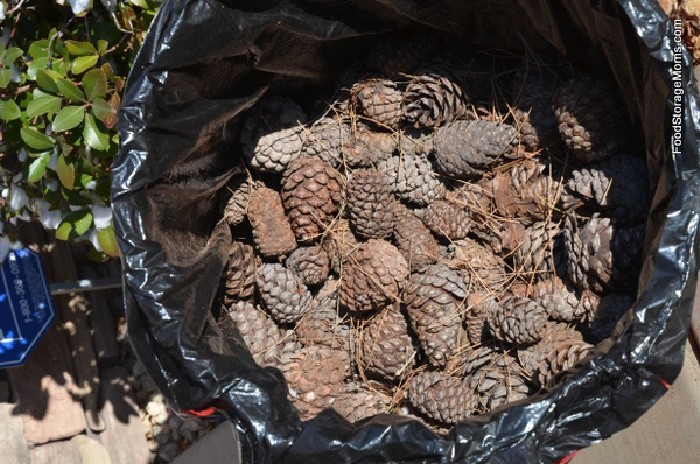



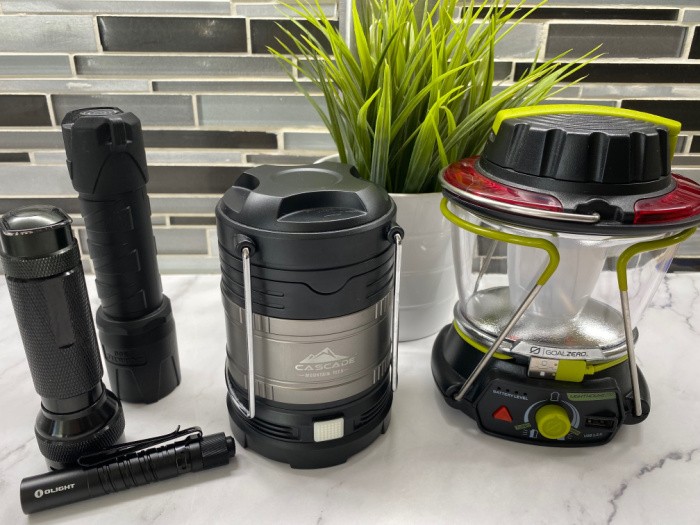
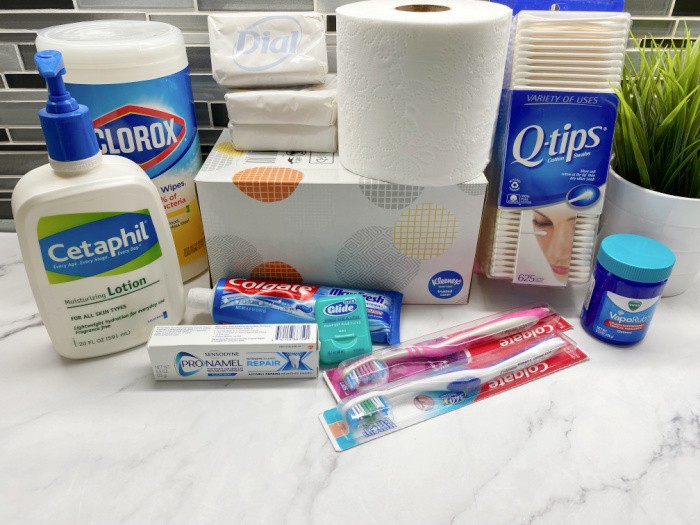
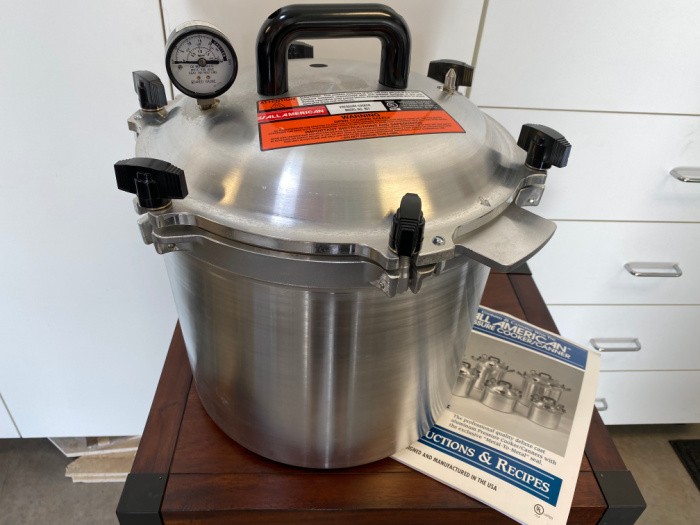




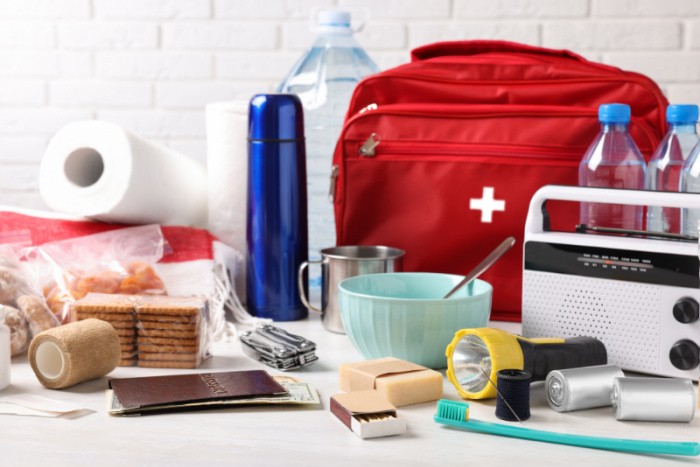
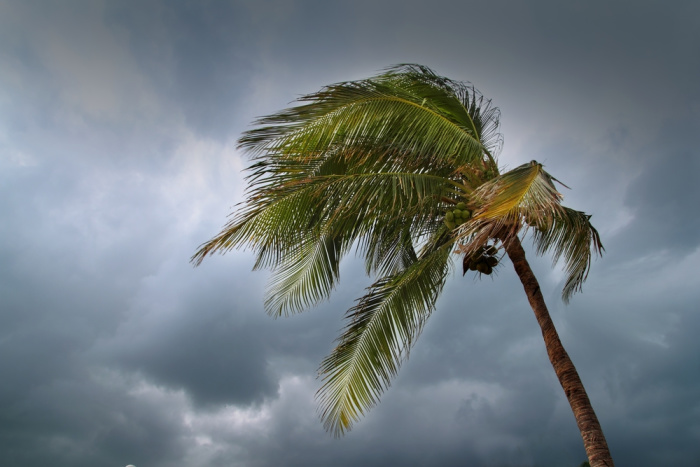
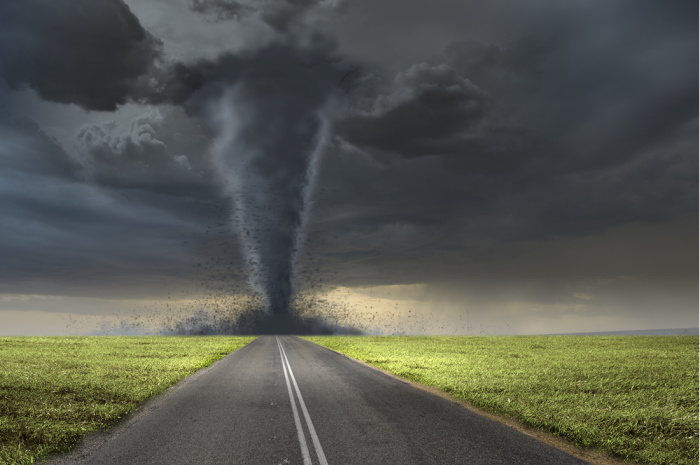


Good stuff. Just sat on a flooded highway this morning with a full tank and no worry
Hi Matt, I love hearing this!! I don’t worry about you, my friend! You’ve got this! Linda
Good idea. I was leaving Houston (planned) as a hurricane was forecast, so thousands were evacuating the city. The trip home is usually 4 hours, but it took 12. I always carry water, granola bars, and fruit when I travel as well as a first aid kit, blankets, jump starter, etc. Fortunately, I had filled the gas tank the day before. I was stuck in traffic for several hours before I could exit to get to a bathroom. I now carry an emergency bathroom kit for those emergencies.
Hi Gretchen, wow, 12 hours compared to 4 hours!! I’m with you on carrying an emergency bathroom kit! We never know how long we’ll be trapped on the highway without being able to exit. Great comment, thank you! Linda
We are currently experiencing flooding. I always bring my 2 dogs and their gear when I leave my semi-rural house during inclimate weather. I have to be prepared for all of us in case I can’t get home.
Hi Lori, I love your comment. I have a bag of “stuff” in my car for my dog as well. We have to be prepared for the whole family and that includes our beloved pets. Love this! Linda
Whatever you store in your car be sure that it can be in there awhile. Do not store nuts or chocolate because they can melt in hot weather and/or go rancid. After a few weeks, rotate to keep dried fruit, nuts, chocolate fresh.
Hi Cheryl, oh you are so right, nuts go rancid so quickly. Chocolate would be a mess to clean up if the outside temperatures get very hot! I tend to keep freeze-dried foods in Pantry cans, they last a very long time. But fresh chocolate would be nice in the winter (it wouldn’t melt unless it was close to the heater). Linda
Years ago our highway was shut down completely due to a train derailment carry hazardous materials. We had taken a day trip and we’re headed home, had some lunch and had filled up the gas tank before starting for home. Traffic was at a complete standstill. After an hour, my husband and 2 boys had walked back to the last exit for some drinks. Long lines for the restroom. Being male has some advantages, if any bush is handy. We spent a total of 9 hours to get home on a trip that should have been only 1 1/2 hours drive. We were lucky. We had visited a bakery during our trip and were bringing goodies home, not the best dinner but we had something. I always carry throw blankets that rolled up under the backseats so the boys were able to sleep. As for me, I found an old toddler size diaper leftover in the car can be hand on that trip, still carry diaper in the car ever since. We always have carried other supplies (first aid kit, tools, water) in the car. You hope you never have to use them but it was nice that we were able to an extended trip more bearable.
Hi Roxanne, oh my gosh, the hazardous materials are scary enough!! Yikes! I bet those bakery goodies were delicious! Great tip on the blankets! We never know when we may need something. You started a trip back home expecting 1-1/2 hours that turned into 9 hours. Wow! I’m glad your gas tank was full! Good job! Linda
I think I’d also recommend having meds on hand too. Carry extra on your person or part of your emergency kit. Not everybody is born is born in perfect bodies.
Hi Gin, great reminder, I always carry mine, but I will add it to the list for those who may not think about it. Thank you!!! Linda
I have stuff in my car, but no place to put it. Toyota engineers made two tiny compartments and the spare fits tightly in it’s tire well. They really did not consider where one would put tools, flares, etc., in the vehicle.
I also have a pickup, but have yet to put many supplies in it. I keep it kind of empty since I pickup things all the time and need space inside as well as the empty bed. Again, like the Toyota, supplies and gear is exposed and anyone taking a peek inside will see everything.
Based on the items or devices available and ideas from preppers and survival minded people, I need to figure out how to pack and carry everything. For the Toyota I can create shelves or a rack, but need to hide everything. My efforts for everyday use will also handle if not turn my vehicles into “bug out ready” vehicles should I need to evacuate or need to travel.
In the truck the space beneath the back seat is plentiful, but I need shallow containers no ore than about 7 inches, so those heavy duty boxes won’t fit. I need to use smaller containers or build a tray that fills the space.
Hi Frank, it really is hard to fit all that we really want for an emergency in our vehicles. I can only take what I can in my small Honda CRV. But something is better than nothing. I totally agree they should ask us how to design cars for storage, we know what we need, but we need a place to stow it securely!! Linda
We drove south from Western New York to Orlando, Florida every January, February and March for the first 12 years of our retirement. While we carried a lot, there is no way we can add all this, especially with my mobility scooter taking up most of the back. Even going thru West Virginia or The DC Beltway, we never ran into a delay of more than a hour….. I realize we were blessed. Times are also changing, and while we never had anything taken from our car, now everything would need to be hidden. We no longer travel more than 90 minutes from home, and only during good weather. You list is very well thought out and I will pass it on to my kids.
Hi Chris, oh that yearly trip for 12 years sounds so wonderful. You are so right, times are changing, that’s for sure. There are no words for what is going on right now. I never pictured the chaos going on today in my lifetime. It’s so sad. Luckily we can enjoy our family and friends and keep staying positive. We must. Linda
In addition to virtually everything you listed I kept a bag of kitty litter in my car when we lived where it snowed. Not for cat poop, but because the stuff is great for getting unstuck in snow and ice.
And a mobile HAM radio or at least a CB would also be a good addition.
Also, Alpaca wool socks are the absolute best for wicking moisture away from your feet and keeping them warm and dry. I get mine from Alpacas of the Southwest.
Hi Ray, oh yeah, kitty litter for stuck cars, good one. I need to get those socks for Mark, thank you for the reminder. I was going to get my Ham Radio license, another great tip!!!! Linda
Each fall, I pack chains, kitty litter and other cold weather items: shovel, scraper (found one with an extendable handle – I’m pretty short), an empty cardboard box (great for putting down if you need to put chains on or change a flat tire), blankets, gloves, and other items on your list. I have a dedicated plastic tote for things that are year round items: paper towels, gloves, hand sanitizer, wet wipes, etc. That way, I only have to change out seasonal items – fall/winter and spring/summer. I never leave food of any kind in my car – I have had to dispose of dead critters before and simply will not leave food in the car!! But I do keep a bag by my front door with granola bars, hard candies, water, that sort of thing. If I am driving more than just around town, I carry 2 gallons of water, a large water bottle for drinking, blankets and other necessities.
Several years ago, I was in Portland Or and went to the Pendleton Woolen Mills Mill End store – I was looking specifically for larger pieces of wool for blankets. I was able to find a huge piece of coat wool (it has almost a felted feel about it) that I snagged for $80 (would normally have sold for 2-3 times that). It doesn’t unravel and is warmer than most woven wool blankets. The weave is very tight and sheds water. I take that thing camping!! Very very warm. Also, because it is not that soft wool blanket feel (aka loft), it packs down tighter than a wool blanket.
HI Leanne, thank you your great tips on how you pack your car! I LOVE it! Boy, you really scored at the Pendleton Woolen Mill End Store!!! I love their jackets, I’m not sure if their still in business, I haven’t seen a store in years but I haven’t looked either. Everything thing they sell is top notch quality, yes, it is expensive but as we know we get what we pay for with the exception of a great sale! Great comment, Linda
Pendleton Woolen Mills is still in business. They have two stores: Pendleton, Oregon and Washougal, Washington. The Mill End store in Portland, Oregon is where they sell the ends of the runs. It is hit or miss finding great deals like I did. Most of the cost wool is much smaller. If you go to the regular stores, the have or used to have a discount area where there might be something wrong with the blanket or item of clothing. I bought 2 blankets that were seconds for deep discount at the Pendleton Oregon store – one had a small hole and the other had a slightly off stripe. I was given a small skein of yarn to darn the hole but I never did find the hole! I’ve only bout blankets and the cost wool, not the clothing. Also, a lot of the clothing is not made in the USA now. Blankets are made here.
Hi Leanne, oh my gosh, I may have to look online to see if they have a blanket on sale! Pendleton Wool is the best, thank you for letting me know they are still in business! I love this! Linda
I’ll agree with Ray on the alpaca socks! I’ve gotten mine from Willowace–mine have worn like iron so I haven’t had to test the promise, but (like Darn Tough) lifetime guarantee–supposedly they will replace the socks no matter what, if you have a problem.
An alternative to AAA… AAA won’t cover you if you are pulling a horse trailer (you suddenly become a commercial vehicle, according to them)–and they do NOT tell you this until you have a problem and are stranded on the side of the road. Guess how I know. I would imagine it’s the same whatever animals/livestock you may be transporting; don’t know if they extend this to livestock vans. Anyway–if this fits anyone’s situation, it would be well worth checking out USRider, which is foremost designed to help anyone transporting horses (they even help locate a vet, transport, and/or stabling for your animals!)–but we’ve also used USRider when there was a problem with our foxhound truck, and it also works for any ordinary vehicle you may be driving or riding in. They even check with you afterwards to make sure the garage/tow company did a good job. It *is* more expensive than AAA–so, probably not worthwhile unless you have the animal situation–but members do get also get a good many perks and discounts from equine, farm, and equipment partners, which really helps save money.
HI Rhonda, oh this is gold mine tip! Thank you for sharing the tip about USRider! THis will tip willl help a lot of people. I don’t have any animals but have used AAA years ago. Thank you, LInda
I did slide off to the side of the road one winter – the vehicle was leaning on the rear and not all tires touching the road – I was alone too! I took a look to find one back tire sort of in the air – I didn’t have anything! I carry a little pen knife on me – a gift from my sons – so I used it to snag some branches off trees, and a couple fir boughs. It gave me just enough grip to get the vehicle out of that awkward road slide winter adventure. 🙂 Definitely keep a emergency kit in your vehicle.
Hi Gin, oh that is scary, icy roads are the worst for me. I love that your son had given you a pen knife, that was a blessing for sure. Thank you for sharing your story. Linda